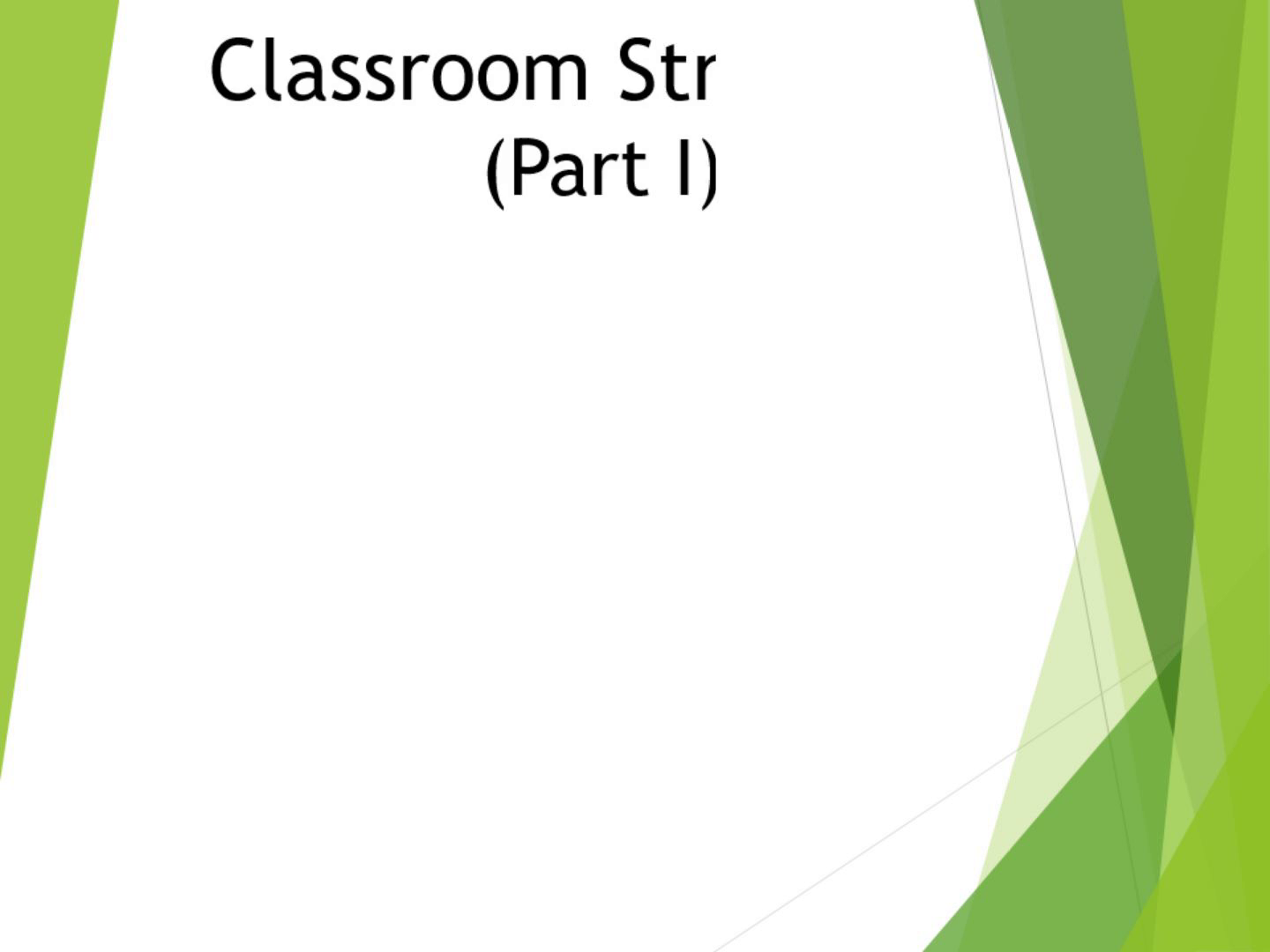
Common Behavior Intervention Strategies
Scene 1 (0s)
Classroom Strategies (Part I). s SOUTHWEST ISD SPECIAL EDUCATION Empowering Unique Minds, Shaping Bright Futures.
Scene 2 (9s)
Classroom Strategies. Social Emotional Learning (SEL) consists of five core competencies; self-awareness, self-management, responsible decision making, social awareness, and relationship skills. SEL in the classroom can be promoted through explicit instruction and can also be integrated across classroom instruction when supported by research-based behavioral practices..
Scene 3 (25s)
Offering Choices. Teaching to students’ strengths and interests can promote creative and critical thinking. Also, providing students with choices leads to increases in autonomy and, in turn, motivation and learning..
Scene 4 (42s)
Offering Choices. Students, like adults, tend to be more motivated to complete a task and perform better on it when they choose to engage in the task themselves, rather than having the task chosen for them..
Scene 5 (56s)
Offering Choices. When students choose their own topic or select how to present their work, they are more likely to take ownership over their work and/or feel confident demonstrating their knowledge..
Scene 6 (1m 10s)
Verbal Reinforcement for Appropriate Behavior. Verbal reinforcement is one of the most effective types of positive reinforcement that teachers can use..
Scene 7 (1m 30s)
Verbal Reinforcement for Appropriate Behavior. Always give praise immediately. The sooner the positive reinforcement is given in relation to a behavior, the more likely the student will continue or repeat that behavior..
Scene 8 (1m 49s)
Verbal Reinforcement for Appropriate Behavior. Provide information to students about their competence or the value of their accomplishments. For example, “That was a wonderful paragraph you wrote.” or “That was a kind thing to do when you helped Ms. Fisher carry those bags. I know it made her feel more welcome in our school.”.
Scene 9 (2m 7s)
Verbal Reinforcement for Appropriate Behavior. Attribute success to effort and ability. This implies that similar successes can be expected in the future. For example, “Your studying really paid off” or “That’s a good grade you got on your math test. It shows you really nailed problem solving.”.
Scene 10 (2m 28s)
Planned Ignoring. The procedure of planned ignoring involves deliberate teacher inattention to the occurrence of targeted student behavior. In other words, teachers identify behaviors that function as a means of getting their attention and selectively ignore them..
Scene 11 (2m 55s)
Planned Ignoring. Planned ignoring is one of the simplest types of extinction procedures. The term extinction refers to discontinuing unintentionally rewarding a behavior. Extinction is an intervention strategy that has been widely shown to be effective in reducing rates of inappropriate behaviors in children..
Scene 12 (3m 14s)
Planned Ignoring. Although the process sounds simple enough, it is often extremely challenging to implement. By shifting the way that you respond to a child’s behavior, you are changing their expectations – often very suddenly..
Scene 13 (3m 29s)
Planned Ignoring. When implementing extinction procedures, it is important to remember the following: Be consistent with your planned ignoring. Keeping consistent is essential when seeking to change unwanted behavior. The target of the intervention needs to understand that whatever expectation they had in the past will no longer be relevant in the present..
Scene 14 (3m 49s)
Planned Ignoring. When implementing extinction procedures, it is important to remember the following: ONLY use planned ignoring for attention seeking and distracting, but harmless behaviors. DO NOT use planned ignoring for behavior that is harmful like; physical aggression, property destruction, elopement, or self-injurious behaviors..
Scene 15 (4m 15s)
Planned Ignoring. Reinforce other appropriate behavior proactively! It is more useful to focus more on positive behavior. The message you would be sending to the child would essentially be “It is easier for you to get what you want if you do the right thing.” Teachers should intentionally provide the “attention seeking” student with lots of “positive attention.”.
Scene 16 (4m 38s)
Planned Ignoring. Keep yot.r hands and feet to yotrself. Raise your hand before leaving you• seat. Follow all teacher instructions. Try to finish all assigned work. Respect school and personal property.
Scene 17 (5m 3s)
Planned Ignoring. Be prepared for the extinction burst. Extinction bursts are a sudden, but an expected increase in behavior. They occur often when extinction procedures are first implemented. During an extinction burst, a child may respond emotionally; that is, they may increase both the rates and intensity of problem behavior..
Scene 18 (5m 28s)
Planned Ignoring. So why do professionals continue to recommend extinction procedures knowing that extinction bursts are likely? They do so because they are confident that if they remain consistent that the problem behavior will eventually diminish..
Scene 19 (5m 48s)
Contributors. Bella More, Educational Diagnostician Steffanie Sparrow, Licensed Specialist in School Psychology Mario Bernal, Licensed Specialist in School Psychology Valerie Torres, Licensed Specialist in School Psychology Ruth Villegas Graduate Student.
Scene 20 (6m 11s)
End of The Classroom Environment.